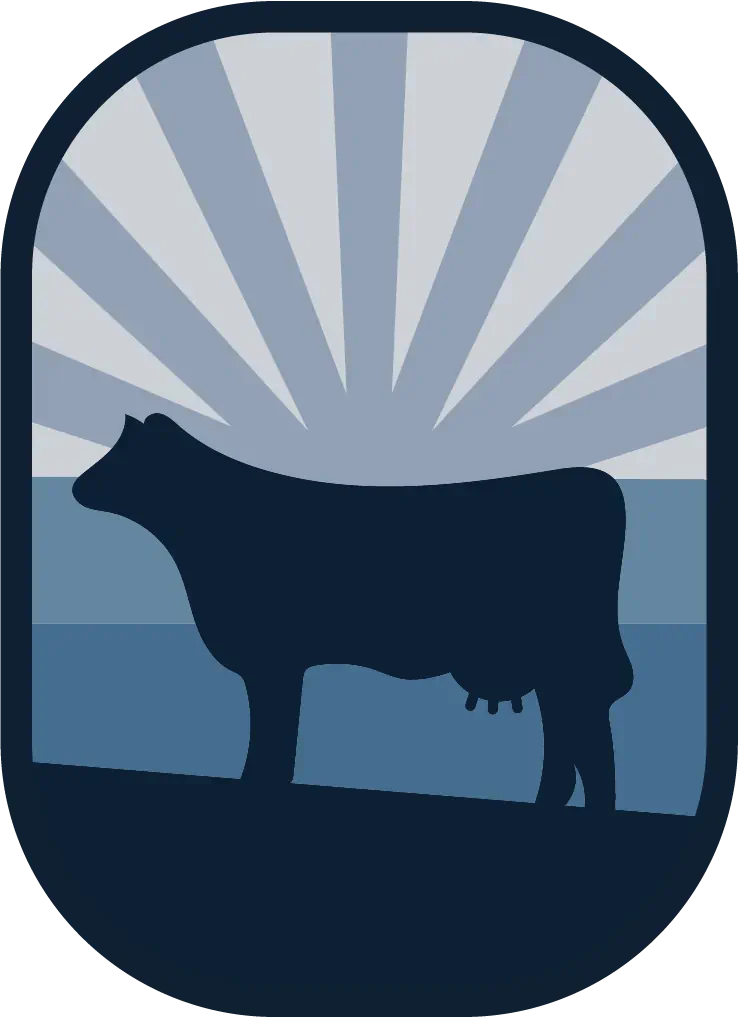I. Introduction
Milk pricing in the US is extraordinarily complicated due to the regulated systems of the Federal Milk Marketing Orders (FMMO) in most parts of the country and the California Department of Food and Agriculture’s state order. While they are separate and distinct, this paper will focus on the workings of the Federal Order program as the California system also uses product price formulas to calculate milk prices. It is important to remember that the regulated pricing systems establish a minimum price for milk that processors need to pay and free-market movements of cheese, butter, milk powder, and dry whey prices determine these milk prices. While the government technically “sets” the milk price, in reality, supply and demand factors for each of the commodities set the prices for milk. This paper provides an overview of milk pricing, but at a very high level as the details are numerous and
complex.
It is important to understand several key provisions of the FMMO’s. First, Federal Orders establish prices at two levels:
- Farm Level – based on level of various milk components and value of those components and average utilization of all milk in the market area
- Processor Level – based on milk component levels, component values and processor’s specific utilization of the milk
Milk plants that handle Grade A milk for fluid (Class 1) purposes are called “handlers”. These include fluid milk bottlers, supply plants (e.g. cheese plants), and dairy cooperatives. Dairy farmers who market their milk to a handler are called “producers”. Handlers are regulated, but dairy farmers are not. Handlers are regulated and are required to pay at least minimum class prices into a Federal Order pool. All handlers within a class pay the same
base price for milk, thereby ensuring equal raw product costs.
One of the central tenets of the FMMO’s is classified pricing. The FMMO’s establish a minimum price that handlers have to pay each month based on how the milk is used. Each class has a different price with Class 1 being the highest valued milk and Class 3 and 4 having lower prices for milk. A common question is what is the difference in the milk – there is none. The milk is the same quality and has the same characteristics, but the pricing system puts a different value on the milk depending on how it is used.
- Class 1 – fluid milk for drinking
- Class 2 – ice cream, yogurt, cottage cheese, sour cream
- Class 3 – cheese and whey
- Class 4 – butter and milk powder
Pricing formulas for different classes of milk were developed in the 1960’s and have evolved over time. Back then, most of the milk in Minnesota and Wisconsin was used to produce cheese, butter, and milk powder and represented a large portion of the US total. So, the price plants paid for Grade B milk was used as the base price for Class 3 milk in all FMMO’s and the mover of Class 1 and 2 prices. This was known as the M-W price. Class 1 prices around the US were based off of the distance from Eau Claire, WI. As the amount of Grade B milk declined, the M-W price series was replaced in 1995 by the Basic Formula Price (BFP). The BFP was calculated using manufacturing grade milk prices in MN and WI from the prior month and updated with current month dairy product prices (cheese, butter, NFDM). In the late 1990’s, Federal Order reform consolidated the number of orders, established 4 classes of milk, flattened the Class 1 differential pricing structure, established a new mover for Class 1 prices, and replaced the BFP with multiple component pricing formulas.
II. Multiple Component Pricing
In 2000, milk started being priced in the FMMO’s using multiple component pricing (MCP) formulas. The theory behind MCP is to derive a milk price from the products that are made from the milk. MCP formulas require 3 inputs, 2 of which are derived by USDA formal rulemaking (yield and manufacturing cost):
- Yield – how much product can be made from the milk
- Manufacturing cost – how much it costs to turn the milk into a commodity product
- End-product price – what is the value of the product
In short, the multiple Component Price formula is quite simple:
(Product Price – Manufacturing Cost) x Yield Per Lb of Component
All milk prices in Federal Orders are based on component values derived from product price formulas. These component values are used to determine the minimum prices used in all Federal Orders. Federal Orders have four component values and are derived from four product price formulas, one each for butter, nonfat dry milk, cheese and dry whey:
- Butterfat – value is based on butter price
- Nonfat solids – value is based on nonfat dry milk (NFDM) price
- Protein – value is based on cheese and butter prices
- Other solids – value is based on dry whey price
In the Federal Order product price formulas, make allowances represent all costs other than the cost of farm milk and other milk inputs necessary to convert milk into a finished product. In addition to in-plant costs, the make allowance also includes administrative overhead, costs associated with marketing the finished product, and a value for return on investment. The current make allowances were established in 2008:
- Butter $0.1715/lb
- Nonfat dry milk $0.1678/lb
- Cheese $0.2003/lb
- Dry whey $0.1991/lb
In general, the yield factors used in FMMO’s reflect the volume of finished product from processing one pound of component. The USDA also indirectly accounts for the loss of components between the farm and plant by making adjustments to the yield factors. Since the yield of cheese is dependent on both the protein and butterfat in milk, there are two yield factors in the cheese product price formula, one for protein, and one for butterfat, and are
based on the Van Slyke Cheese Yield Formula. The current yield factors USDA currently uses to determine the pounds of finished product per pound of component are as follows:
- Butter 1.211
- Nonfat dry milk 0.990
- Dry whey 1.030
- Cheese: Protein 1.383
- Cheese: Butterfat 1.572
Federal Orders use wholesale dairy product prices based on dairy product manufacturers’ transactions and collected weekly by the Agricultural Marketing Service (AMS) of USDA. Each week, manufacturers have to report both price and volume data on sales transactions for Grade AA butter, nonfat dry milk, dry whey, and cheddar cheese sold in both 40-lb blocks and 500-lb barrels. This data is published every Wednesday at 3PM (Eastern) in the National Dairy Products Sales Report (NDPSR) and are based on sales for the week ending the previous Saturday, so there is always a one week lag in the data. For use in the Federal Order product price formulas, the NDPSR price data is used to calculate:
- A monthly average price for each product for use in some class prices
- A two-week average price for each product for use in other class prices
Class and component prices are announced for the previous month on or before the 5th of the following month, and always use all weekly dairy product price data not used for the last month’s class and component prices. The monthly component prices, announced on or before the 5th of the following month, are used to calculate the Federal Order minimum prices for Class II butterfat and all Class III and Class IV prices. Advanced prices and pricing
factors are announced for the following month on or before the 23rd of the preceding month, and always use the two most recent weeks of dairy product price data. The advanced component prices, announced on or before the 23rd of the preceding month, are used to calculate the Federal Order minimum prices for Class II skim milk and all Class I prices.
III. Milk Pooling
The other central tenet of the FMMO’s is pooling. While handlers pay different prices for milk depending on how it’s utilized, the pooling concept results in all dairy farmers being paid the same base price for their milk regardless of where they sell it. The goal of pooling is to evenly distribute money from milk sales to farmers and avoid destructive competition between farms.
For someone new to milk pricing, the concept of pooling is often difficult to understand. To help better explain it, here is a simplified example of how a Federal Order pool works. In this example, there are two farms and two processors. In the order, the milk utilization is 50% class 1 and 50% class 3. The class 1 price is $18.00 per cwt and the class 3 price is $16.00 per cwt. While the processors each pay a different price for the milk, the farmers get paid
the same price ($17.00) – the blended price according to how the milk was used in the order. The difference between the blend price and Class III price ($1.00) is paid to producers in the form of the “Producer Price Differential” (PPD).

IV. Summary
There is an old joke about a senior-level USDA person testifying to Congress on dairy policy and milk pricing. He said there are only three people that understood it and two of them are lying. It takes years of working on milk prices before you can really understand it and how it works. For companies buying milk, it is important to understand how the milk prices are calculated. Once the basic concepts presented in this paper are fully understood, it is time to move on to Milk Pricing 201.
V. References and Additional Information
For more information, contact:
The McCully Group
Mike McCully
mike@themccullygroup.com
Office 312-646-0361
Mobile 773-368-9561
Other resources:
USDA Agricultural Marketing Services – Dairy Program
https://www.ams.usda.gov/about-ams/programs-offices/dairy-program
California Department of Food and Agriculture
https://www.cdfa.ca.gov/dairy/


